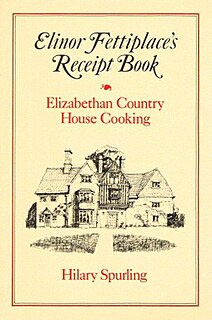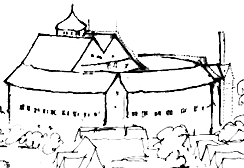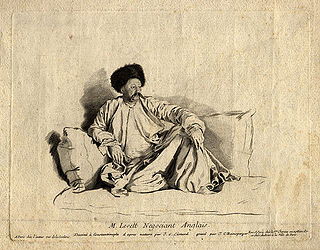 W
WThe Elizabethan era is the epoch in the Tudor period of the history of England during the reign of Queen Elizabeth I (1558–1603). Historians often depict it as the golden age in English history. The symbol of Britannia was first used in 1572, and often thereafter, to mark the Elizabethan age as a renaissance that inspired national pride through classical ideals, international expansion, and naval triumph over Spain. The historian John Guy (1988) argues that "England was economically healthier, more expansive, and more optimistic under the Tudors" than at any time in a thousand years.
 W
WFashion in the period 1550–1600 in Western European clothing was characterized by increased opulence. Contrasting fabrics, slashes, embroidery, applied trims, and other forms of surface ornamentation remained prominent. The wide silhouette, conical for women with breadth at the hips and broadly square for men with width at the shoulders had reached its peak in the 1530s, and by mid-century a tall, narrow line with a V-lined waist was back in fashion. Sleeves and women's skirts then began to widen again, with emphasis at the shoulder that would continue into the next century. The characteristic garment of the period was the ruff, which began as a modest ruffle attached to the neckband of a shirt or smock and grew into a separate garment of fine linen, trimmed with lace, cutwork or embroidery, and shaped into crisp, precise folds with starch and heated irons.
 W
WThe Accession Day tilts were a series of elaborate festivities held annually at the court of Elizabeth I of England to celebrate her Accession Day, 17 November, also known as Queen's Day. The tilts combined theatrical elements with jousting, in which Elizabeth's courtiers competed to outdo each other in allegorical armour and costume, poetry, and pageantry to exalt the queen and her realm of England.
 W
WThe Act of Supremacy 1558, sometimes referred to as the Act of Supremacy 1559, is an act of the Parliament of England, passed under the auspices of Elizabeth I. It replaced the original Act of Supremacy 1534 issued by Elizabeth's father, Henry VIII, which arrogated ecclesiastical authority to the monarchy, and which had been repealed by Mary I. Along with the Act of Uniformity 1558 it made up what is generally referred to as the Elizabethan Religious Settlement.
 W
WThe Anglo-Moroccan alliance was established at the end of the 16th century and the early 17th century between the kingdoms of England and Morocco. Commercial agreements had been reached by Queen Elizabeth I of England and the Moroccan Sultan Ahmad al-Mansur on the basis of a common enmity to Philip II of Spain. The arms trade dominated the exchange, and numerous attempts at direct military collaboration were also made.
 W
WThe "Copperplate" map of London is an early large-scale printed map of the City of London and its immediate environs, surveyed between 1553 and 1559, which survives only in part. It is the earliest true map of London. The original map was probably designed for hanging on a wall, and is believed to have measured approximately 3 feet 8 inches (112 cm) high by 7 feet 5 inches (226 cm) wide. No copies of the printed map itself are known to have survived; but between 1962 and 1997 three of the original engraved copper printing-plates – from a probable total of 15 – were identified. Although only a fragmentary portion of the map is known, the three plates cover the greater part of the built-up heart of the City of London.
 W
WElinor Fettiplace's Receipt Book is a 1986 book by Hilary Spurling containing and describing the recipes in a book inscribed by Elinor Fettiplace with the date 1604 and compiled in her lifetime: the manuscript contains additions and marginal notes in several hands. Spurling is the wife of a descendant of Fettiplace who had inherited the manuscript. The book provides a direct view of Elizabethan era cookery in an aristocratic country house, with Fettiplace's notes on household management.
 W
WElizabethan furniture is the form which the Renaissance took in England in furniture and general ornament, and in furniture it is as distinctive a form as its French and Italian counterparts.
 W
WThe Elizabethan Religious Settlement is the name given to the religious and political arrangements made for England during the reign of Elizabeth I (1558–1603) that brought the English Reformation to a conclusion. The Settlement shaped the theology and liturgy of the Church of England and was important to the development of Anglicanism as a distinct Christian tradition.
 W
WThe Globe Theatre was a theatre in London associated with William Shakespeare. It was built in 1599 by Shakespeare's playing company, the Lord Chamberlain's Men, on land owned by Thomas Brend and inherited by his son, Nicholas Brend and grandson Sir Matthew Brend, and was destroyed by fire on 29 June 1613. A second Globe Theatre was built on the same site by June 1614 and closed by an Ordinance issued on 6 September 1642.
 W
WThe Great Bed of Ware is an extremely large oak four poster bed, carved with marquetry, that was originally housed in the White Hart Inn in Ware, England. Built by Hertfordshire carpenter Jonas Fosbrooke about 1590, the bed measures 3.38m long and 3.26m wide and can 'reputedly... accommodate at least four couples'. Many of those who have used the bed have carved their names into its posts.
 W
WThe Levant Company was an English chartered company formed in 1592. Elizabeth I of England approved its initial charter on 11 September 1592 when the Venice Company (1583) and the Turkey Company (1581) merged, because their charters had expired, as she was anxious to maintain trade and political alliances with the Ottoman Empire. Its initial charter was good for seven years and was granted to Edward Osborne, Richard Staper, Thomas Smith and William Garret with the purpose of regulating English trade with the Ottoman Empire and the Levant. The company remained in continuous existence until being superseded in 1825. A member of the company was known as a Turkey Merchant.
 W
WThe Mermaid Tavern was a tavern on Cheapside in London during the Elizabethan era, located east of St. Paul's Cathedral on the corner of Friday Street and Bread Street. It was the site of the so-called "Fraternity of Sireniacal Gentlemen", a drinking club that met on the first Friday of every month that included some of the Elizabethan era's leading literary figures, among them Ben Jonson, John Donne, John Fletcher and Francis Beaumont, Thomas Coryat, John Selden, Robert Bruce Cotton, Richard Carew, Richard Martin, and William Strachey. A popular tradition has grown up that the group included William Shakespeare, although most scholars think that was improbable.
 W
WThe Rose was an Elizabethan theatre. It was the fourth of the public theatres to be built, after The Theatre (1576), the Curtain (1577), and the theatre at Newington Butts – and the first of several playhouses to be situated in Bankside, Southwark, in a liberty outside the jurisdiction of the City of London's civic authorities. Its remains were excavated by archaeologists in 1989.
 W
WThe School of Night is a modern name for a group of men centred on Sir Walter Raleigh that was once referred to in 1592 as the "School of Atheism". The group supposedly included poets and scientists Christopher Marlowe, George Chapman, Matthew Roydon and Thomas Harriot.
 W
WThe Sea Dogs were a group of sea-raiders and privateers who were authorized by Elizabeth I of England. They also engaged in slave trading. They committed piracy in the Caribbean as well as in European waters.
 W
WThe Spanish Company was an English chartered company or corporate body established in 1530, and 1577, confirmed in 1604, and re-established in 1605 as President, Assistants and Fellowship of Merchants of England trading into Spain and Portugal, whose purpose was the facilitation and control of English trade between England and Spain through the establishment of a corporate monopoly of approved merchants.
 W
WThe "Woodcut" map of London, formally titled Civitas Londinum, and often referred to as the "Agas" map of London, is one of the earliest true maps of the City of London and its environs. The original map probably dated from the early 1560s, but it survives only in later and slightly modified copies. It was printed from woodcut blocks on eight sheets, and in its present state measures approximately 2 feet 4 inches (71 cm) high by 6 feet (180 cm) wide.